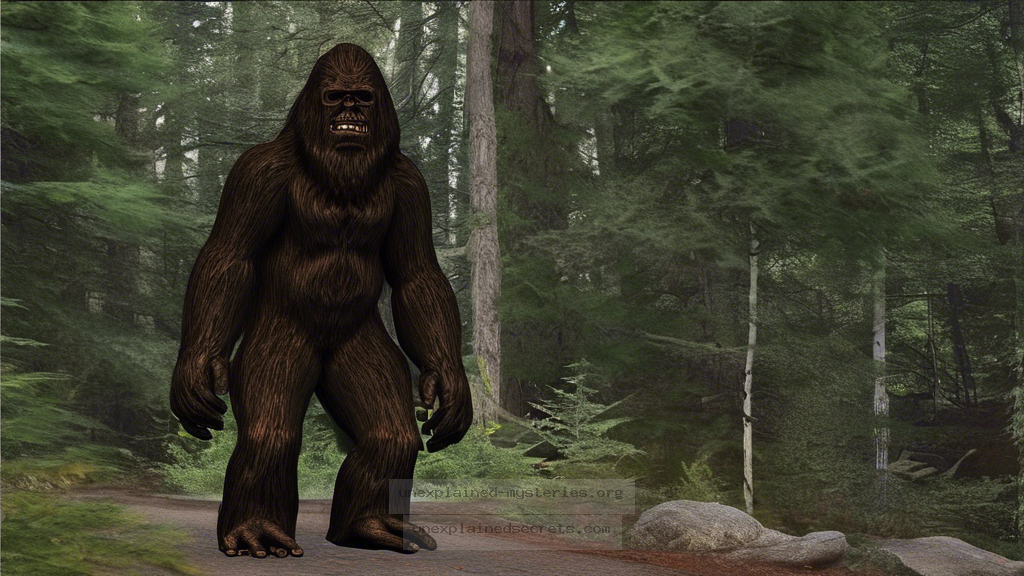What Can the Patterson-Gimlin Film Reveal About the Existence of Bigfoot?
What Can the Patterson-Gimlin Film Reveal About the Existence of Bigfoot?
The Patterson-Gimlin film, shot in 1967, remains one of the most debated pieces of evidence in the cryptozoological community. But what does it really say about the existence of Bigfoot? This question is crucial for both enthusiasts and skeptics alike, as it encapsulates the ongoing struggle between folklore and science. Understanding this mystery not only informs our perspective on Bigfoot but also reflects broader issues of evidence, belief, and the nature of our understanding of the unknown.
Historical Context: The Origins of the Patterson-Gimlin Film
The iconic Patterson-Gimlin film was captured on October 20, 1967, in Bluff Creek, California, by Roger Patterson and Bob Gimlin. The two men were avid Bigfoot enthusiasts and had been searching the area for any sign of the elusive creature. The film itself is about 59.5 seconds long and features a large, bipedal figure moving through the forest. This footage has become a cornerstone of Bigfoot lore, spawning countless analyses, investigations, and debates over its authenticity.
In the years leading up to the film’s release, interest in Bigfoot was already gaining momentum, particularly following the publication of the “Giant Ape” article in the 1950s. The culture of the time was ripe for stories of mysterious creatures, further embedding Bigfoot in American folklore. The Patterson-Gimlin film not only contributed to the Bigfoot mythos but also sparked a wave of subsequent investigations and alleged sightings across North America.
The Core Concepts: Analyzing the Footage
What makes the Patterson-Gimlin film so compelling? Firstly, the creature in the footage exhibits distinctly human-like qualities, including bipedal locomotion and a swinging gait. Many enthusiasts point out that the figure’s proportions—particularly the length of the arms compared to the legs—appear consistent with descriptions from other alleged Bigfoot sightings. This has led to a variety of analyses, attempting to decode the creature’s anatomy and movement.
Experts have conducted frame-by-frame analysis to assess the figure’s physical characteristics and have generally concluded that the creature does not resemble a known animal. Skeptics argue that it could be a person in a costume, yet proponents highlight that the level of detail and movement is challenging to replicate convincingly without modern special effects technology.
Practical Implications: Evidence in Cryptozoology
The Patterson-Gimlin film has had far-reaching implications for the field of cryptozoology. It has inspired a plethora of research, expeditions, and even the establishment of organizations dedicated to studying Bigfoot and other cryptids. The film acts as a litmus test for the credibility of various claims surrounding Bigfoot sightings. It raises fundamental questions about evidence, belief, and the nature of scientific inquiry—how do we weigh anecdotal reports against visual evidence?
In addition, the legacy of the film has influenced the way evidence is collected and scrutinized in the field. Cryptozoologists often use the film as a reference point for assessing the validity of new evidence, whether it be photographic, audio, or physical traces like footprints.
Alternative Perspectives: Costume or Creature?
One of the most pervasive debates surrounding the Patterson-Gimlin film is whether the creature is a genuine Bigfoot or merely a person in a costume. Skeptics argue that the figure’s movements could be replicated by a human wearing a suit, and numerous individuals over the years have claimed to have been the person in the costume; however, none have provided convincing evidence.
On the other hand, advocates for the film’s authenticity cite the lack of any known costume that could produce such realistic movement in 1967. They also point to the creature’s apparent lack of clothing and the way it interacts with its environment as evidence that it is an actual animal rather than a person in a suit.
Common Misconceptions: Debunking Myths Around the Film
There are many misconceptions about the Patterson-Gimlin film that cloud the discussion. One common myth is that the film has been definitively proven to be a hoax. While many skeptics argue this point, there is no consensus within the scientific community, and many analyses have shown inconsistencies that challenge the hoax theory.
Another misconception is that the film is the only piece of evidence for Bigfoot’s existence. In reality, the film is part of a broader tapestry of sightings, physical evidence, and anecdotal reports that contribute to the ongoing mystery of Bigfoot. Each piece of evidence, including the film, should be assessed in context rather than in isolation.
Best Practices for Investigating Bigfoot Evidence
If you are interested in investigating claims surrounding Bigfoot, it’s essential to adopt a systematic approach. Here are some best practices:
- Document Everything: Maintain detailed notes of your findings, including dates, locations, and conditions.
- Use Technology: Utilize high-quality cameras, audio recorders, and even drones to capture evidence from various angles.
- Collaborate: Work with other enthusiasts and experts in the field to share findings and insights.
- Stay Skeptical: Approach each piece of evidence critically, questioning its validity and seeking corroboration.
Future Developments: Ongoing Research and Studies
Research into Bigfoot and the Patterson-Gimlin film continues to evolve. Modern technology, including advanced motion analysis and 3D modeling techniques, is being applied to the footage to glean new insights into the creature’s anatomy and movement. Some researchers have also started using environmental DNA (eDNA) sampling in areas with frequent Bigfoot sightings, hoping to confirm the creature’s existence through genetic evidence.
Moreover, the increasing popularity of citizen science projects and social media platforms allows enthusiasts to share their findings more widely than ever before. This democratization of research could lead to new discoveries as more people become involved in the investigation of cryptids.
Conclusion: The Mystery Endures
The Patterson-Gimlin film remains a cornerstone of Bigfoot lore and a pivotal piece of evidence in the debate over the creature’s existence. It raises critical questions about what constitutes proof and the nature of belief in the unknown. While skepticism is vital in any scientific inquiry, the passion and dedication of both believers and skeptics alike continue to fuel the exploration of this enduring mystery. Whether you view the film as a genuine glimpse into the unknown or a well-orchestrated hoax, its impact on our understanding of cryptozoology cannot be overstated. As research continues and technology advances, perhaps new insights will emerge that will either confirm or debunk the existence of Bigfoot once and for all. Until then, the mystery endures, captivating the imaginations of many. 🌲👣
Other Articles
Recent Posts
- What Happened to Flight MH370? The Conspiracy Theories That Still Haunt Us
- What Secrets Lurk Within the Walls of the Infamous Trans-Allegheny Lunatic Asylum?
- What Evidence Supports the Existence of Bigfoot in the Pacific Northwest?
- What Happened to the Indus Valley Civilization? Unraveling the Mysteries of Ancient Urban Life
- Can Telepathy Be Scientifically Proven Through Laboratory Evidence?







